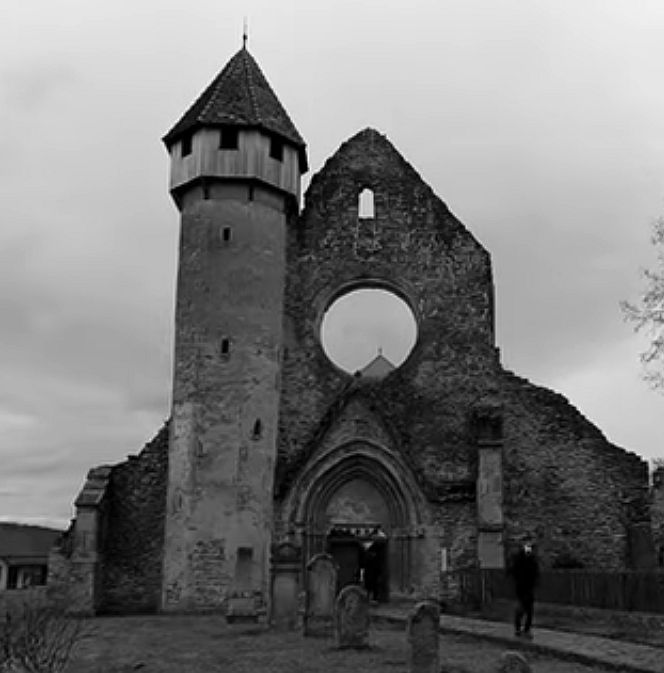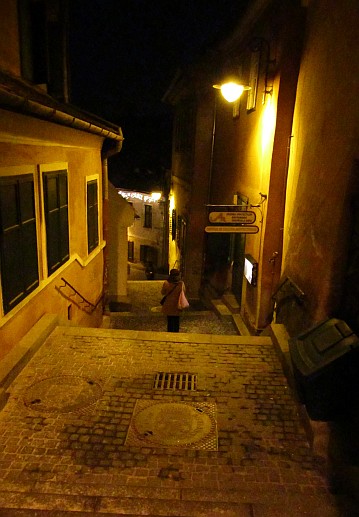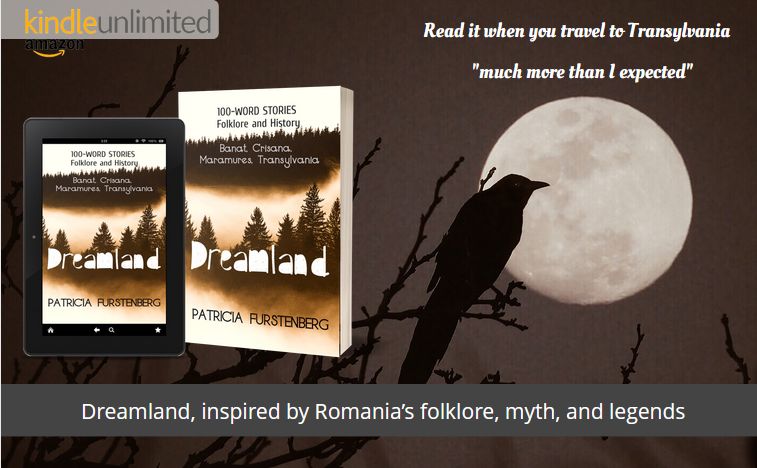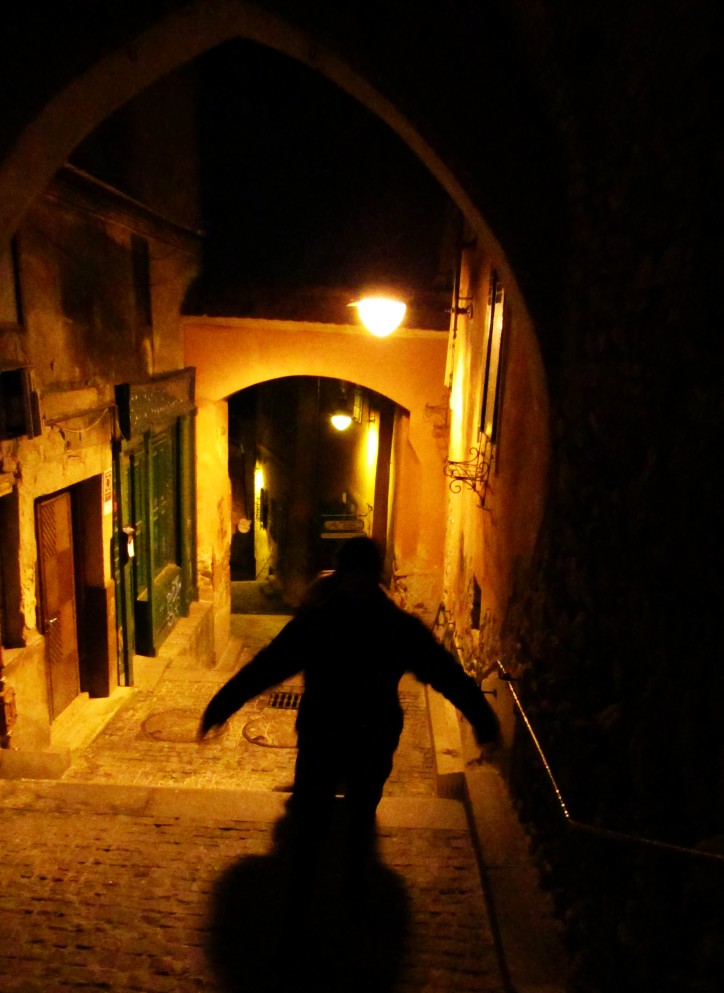“Whoever fights monsters should see to it that in the process he does not become a monster.”
Friedrich Nietzsche
The eternal enigma of vampires lingers in the realm of night. Enigmatic creatures, known for their mysterious nocturnal journeys in pursuit of the life-giving crimson essence, yearn for the vitality they’ve forfeited, thereby weaving a tapestry of legends across history.
The origins of these bloodsuckers are shrouded in mystery, their genesis intertwined with the enigma of immortality. Only a vampire can bestow his immortal curse, setting the stage for our journey through the history of these enigmatic creatures.
While Count Dracula reigns as a paragon in Bram Stoker’s 1897 masterpiece, vampires have etched their presence in human history for millennia, straddling the line between traditional monsters and the arcane realms of zombies and witches.
Vampires: A Fusion of Five Magical Beliefs
A more precise definition focuses on the historically cohesive concept of the vampire that originated in early modern Central and Balkan Europe. According to accounts from folklorists, the vampire synthesizes various characteristics from five distinct categories of magical beliefs: the ghosts, the Alp-like oppressive spirits, the blood-sucking Roman ancient “stryx” (Albanian Shtriga, Romanian Strigoi), the Balkan witches who continue to inflict harm after death, and lastly, the werewolf, which attacks and devours humans while taking a wolfish form.
Until the last century, the world clung to a chilling truth: vampire tales had an unbreakable hold on the collective imagination. Vampire-like entities cast a long and sinister shadow from distant lands to the very heart of ancient civilizations. They were the whispered cause of the unexplained, attributing terrifying, medically unexplained phenomena to their supernatural power. The dread that shrouded the Middle Ages, with its never-ending plagues and Victorian era mysteries surrounding the fate of the dead, all fell under the sinister gaze of these nocturnal specters.
Please take my hand. I invite you to join me as I delve into the mysterious origins and evolution of vampires, uncovering their seductive ties to a world steeped in secrets and dark allure. I’ll give a brief history of vampires and their enduring connection to the eternal intrigue of life’s essence, as well as stories of real vampire hunters and those who thought they were.

Tracing the origins of the first vampire tale proves a haunting enigma
The story of the first vampire begins in the shadowy annals of ancient Egypt, with the fearsome goddess Sekhmet. She embodies a striking parallel to vampire folklore, where eternal death and life dance as one. She is a warrior, harbinger of death, and healer all rolled into one. Her divine lineage connects her to Ra, the sun god himself, who sent Sekhmet to exact vengeance on rebellious humanity, staining her hands with their blood to imbue her with dread might. Sekhmet, the feline deity of plague and remedy, emerges as a figure veiled in the mists of one of the oldest vampire legends as the ancient story progresses. Her unrelenting carnage, driven by divine decree, portrays her as a bloodthirsty harbinger of vengeance, until Ra intervenes with a crimson elixir, for even the undying thirst of a goddess must yield to slumber.
A 4000 years old Night Creature
A haunting figure emerges from the depths of ancient Jewish folklore, dating back two millennia before the common era: Lilith, enigmatic and seductive. Lilith emerges as Adam’s first consort, preceding even the creation of Eve, in texts such as the Alphabet of Sirach, written in the shadow of 800 A.D., and the enigmatic Dead Sea Scrolls, veiled in the darkness of 40 B.C. She defied the role of subservience assigned to her by the divine hand, despite being made of the same earthly clay as her male counterpart. Instead, her path diverged as she fled Eden, forging a forbidden alliance with the archangel Samael.
Her name, derived from the ancient Babylonian language, means “night demon” or “night monster,” and represents an embodiment of dark, primal power.
Lilith has worn many masks throughout history, from a malevolent, ravenous temptress to a transcendent icon of femininity. While her image as the first vampire lives on, as evidenced by her portrayal as the First Vampire in True Blood, a lesser-known story portrays her as a misunderstood and tenacious figure. She becomes the First Misunderstood Feisty Lady in the hearts of self-proclaimed feminists, a symbol of strength and defiance amidst the night’s eternal enigma.

How Vampires Haunted the Plagued Middle Ages and Old Europe
The macabre tapestry of vampire mythology wove its intricate threads throughout Europe amid the shadowy veil of the Middle Ages. These nefarious beings, shrouded in darkness, frequently served as a sinister explanation for the land’s relentless plagues and insidious diseases. A strange blood disorder known as Porphyria whispered its name in hushed tones in the darkest corners of Eastern Europe, potentially sowing the seeds of physical characteristics ascribed to the vampiric ilk. Porphyria’s heinous grip manifested as a disease that gave birth to creatures of the night, cursed with an unholy sensitivity to the very essence of life – light. When exposed, their skin blistered and withered like parchment scorched by the sun’s cruel kiss, while hallucinations danced in the cobwebbed recesses of their tormented minds.
Gums receded, giving the appearance of elongated fangs – the unholy mark. The debilitating effects of light sensitivity were so severe that some people lost more than their humanity; they lost their ears and noses, transforming into grotesque visages reminiscent of vampire legends like Nosferatu.
Porphyria, Born to Be (Royal) Purple
Porphyria is named after the ancient Greek word “porphura,” which means “purple.” The Greeks borrowed this term from the Phoenicians, who used purpura mollusk pigment to dye their royal lineage’s clothing. As a result, in the Byzantine Empire, the term “porphyrogenitos,” or “born to the purple,” denoted that the imperial heir was born in a chamber decorated with this regal hue after their father’s ascension to the throne.
Those unfortunate individuals born to the purple who suffer from porphyria—a group of disorders caused by abnormal accumulations of red and purple pigments produced by the body, known as porphyrins.
The Vampires of Venice
During the bleak expanse of the 1500s, the terrifying shadow of the plague descended on the once-glorious city of Venice, Italy. Born of darkness and despair, this malevolent pestilence found a willing haven within the labyrinthine alleys and close-knit quarters of this once-proud maritime hub. Venice, a crossroads of trade and intrigue, succumbed to the scourge’s relentless grip, a nightmarish incarnation of suffering and mortality. Yet, within the pages of this agony, a strange story unfolded, one that entwined with the very fabric of vampire folklore, casting a sinister pall over the city.
One forlorn figure dared to defy oblivion among the multitude of plague-ridden souls consigned to an unmarked grave.
A lone skeleton emerged from the abyss, its bared teeth pierced by an eerie, age-worn brick. This macabre tableau mirrored the arcane rituals of vampire exorcism that had long haunted Europe’s collective nightmares. While some skeptics speculated that the brick had fallen into her gaping maw after burial, others, such as the tenacious excavator Matteo Borrini, clung to a more sinister truth. They saw the unmistakable handprint of a vampire, a revenant condemned to eternal darkness, its legacy forever etched in the annals of history, in this grotesque artifact.
Between Bloodletting and Porphyria
Bloodletting (phlebotomy), which has a three-millennium history, was only debunked as a medical treatment in the late nineteenth century. First practiced I Egypt, it arrived in Europe in the Middle Ages. Its main goal was to correct humoral imbalances by cleansing the body of harmful humors.
Despite its long history of use, porphyria cutanea tarda, a metabolic disorder characterized by excessive uroporphyrin excretion in urine and stool, as well as distinctive photosensitive skin manifestations, has remained untreatable.
Hippocrates, Galen, and the Four Humors
Around 400BC, Hippocrates, the father of medicine, held the belief that existence was symbolized by four fundamental elements: earth, air, fire, and water. These elements were associated with the four basic humors in the human body: blood, phlegm, black bile, and yellow bile. Each humor was associated with a specific organ—brain, lung, spleen, and gall bladder—and corresponded to distinct personality types: sanguine, phlegmatic, melancholic, and choleric. Illness, according to this theory, was caused by an imbalance of the four humors. When Galen declared in the second century AD that blood was the most dominant humor, venesection (bloodletting) became even more important.
Today phlebotomy therapy is primarily used in Western medicine for a few conditions such as hemochromatosis, polycythemia vera, and porphyria cutanea tarda.
Throughout Europe during the Middle Ages, various interpretations of early vampire folklore flourished, with these malevolent creatures frequently used to explain plagues and other maladies. Porphyria is one such example, a condition characterized by symptoms such as light sensitivity (resulting in blistered skin or burns when exposed), hallucinations, and receding gums that create the illusion of elongated teeth.
Does this image reminds you of Nosferatu?
A Land of Vampires, Magical Transylvania
In folklore and fiction, vampires have long been associated with whimsical Transylvania, an ancient realm nestled within the bosom of Romania. This is no coincidence because it was here that the fictional Dracula took his first unholy breath.

This is no coincidence, because it was here that the fictional Dracula took his first unholy breath. The master of horror, Bram Stoker, wove this region into his story, intertwining the threads of superstition and dread. Romania, the land of ancient fears, whispered tales of the strigoii, once-human monstrosities condemned to an eternity of darkness, feeding on the living’s lifeblood. These ominous murmurs echoed down the centuries, refusing to fade away.
Or had they?
Romanians rely heavily on garlic to ward off bad spirits. Strigoii and Moroii are believed to drink not only the blood of a human, but to feed on its energy too.

However, the sinister specter of vampirism extends beyond Romania’s southern borders, crossing the Danube and entering the heart of Bulgaria. In 2004, a haunting discovery occurred near the sanguine embrace of the Red Sea. Researchers discovered the skeletal remains of the damned, relics that spoke, in the shadow of Debelt.
Researchers discovered the skeletal remains of the damned in the shadow of Debelt, relics that spoke of timeless rituals steeped in darkness. The bodies, cruelly impaled through the chests with iron rods, stood as a testament to the Balkans’ enduring superstitions. The rods pierced their still hearts, imprisoning them in their graves and rendering them powerless to rise and claim new victims. But the terror did not stop there, because the malevolent force of vampirism demanded even more. The wretched skeletons bore the scars of terror, as their teeth had been viciously ripped from their mouths. Perhaps a gruesome precaution to ensure that even if these revenants defied their eternal prison, they would remain toothless and unable to quench their insatiable thirst for the elixir of life.
But, without folklore, where would we be? Certainly culturally poorer, and living far more boring lives.
17th century Witches and Vampires in the Ottoman Empire
Vampire epidemics and witch hunts were vividly depicted in travelogues by prominent Ottoman-era travelers such as Evliya Çelebi centuries before Western literature popularized them.
It was the 17th century and the Ottoman Empire wasjust seeing a revivalwhen the famous Ottoman traveler Evliya Çelebi took a journey covering 257 cities, going from one land to another, and spending 51 years of his 71-year lifetime on the road. As a result, he wrote “Book of Travels,” a 4,000-page book in ten volumes that is one of the world’s most unique sources. Çelebi could tell you a story about anything, including sorcery, magic, and witches.
The first incident occurred on April 26, 1666, in the Caucasus village of Pedsi. Çelebi witnessed the incredible spectacle of a celestial battle between witches. An unexpected lightning bolt illuminated the heavens to such an extent on a pitch-black night that women could embroider by its glow.
Çelebi was perplexed by this occurrence and approached the man nearby, who explained, “Once a year, there is a night of karakoncolos – witches who take to the sky to engage in a great battle.” Karakoncolos is a folkloric term for an imagined creature, witch, or demon. It is said that this battle can be watched without fear.
Stories about witches drinking human blood circulated on karakoncolos nights in the Caucasian region, according to popular belief. On certain nights, these witches consumed the blood of the people they haunted, making them sick. If the victim was an outcast, they frequently succumbed to their illness and died.
When the afflicted person was not alone, their family members would seek the assistance of a “witch hunter” and visit cemeteries to look for signs of disturbed earth, which marked the location where the malevolent witch had emerged. When the witch’s grave was discovered, it was discovered that her eyes were bloodshot from her blood consumption. As a result, the undead witch was discovered and promptly removed from her final resting place.

Decline of Witches and Rise of Vampires
About two centuries after the Salem Witch Trials, half a century after Queen Maria Teresa banned the witch trials in the Hapsburg Empire, and four decades after the last known execution for witchcraft taking place in Switzerland, the world just couldn’t rest.
The decline of witch-hunting had been widely regarded as a triumph of the modern, rational mind over what has variously been referred to as “superstition,” “witch-craze,” and “belief in magic.”
The Balkans and the Rise of Vampires
The first documented cases of vampires appear in historical records, originating from Silesia in 1691, Bohemia in 1618, and the latter half of the 17th century in the Balkans, where Greek, Bulgarian, Romanian, and Serbian tales spoke of creatures known as “moroi” and ” Vrykolakas” (vârcolac in Romanian). These stories describe deceased, people who often died under sad circumstances such as suicide or dying unbaptized or excommunicated, returning from the grave in human or animal form. They plagued, infested, and killed both people and livestock until their un-decayed, blood-filled bodies were exhumed and impaled on a stake, beheaded, or had their hearts removed and burnt.
It wasn’t until 1706 that the first widely read vampire book emerged, authored by Karl Ferdinand Scherz and titled “De magia postuma.” In 1709, Samuel Kolestiri, a Hungarian doctor recounting the plague events in Transylvania, provided a horrifying account of the numerous corpses that were unearthed, impaled on stakes, or beheaded due to their alleged role in spreading the plague.
Decline of Witches and Rise of Vampires in 18th Century Hapsburg Monarchy, Gabor Klaniczay
The First Vampire Story by John Polidori, Lord Byron’s personal physician
A century later, in England, John Polidori was Lord Byron’s personal physician. During the summer of 1816, he accompanied Byron to the Villa Diodati in Switzerland. Percy and Mary Shelley, as well as Claire Clairmont, were also present during this time period. The group decided to challenge one another to write ghost stories after reading “Fantasmagoriana,” a collection of ghost stories. During this time, Polidori wrote “The Vampyre,” which is widely regarded as the foundation of modern romantic vampire fiction. So, even before Dracula was conceived in the mind of the yet-to-be-born Bram Stoker, the first Twilight novel had already been written.
These early cases set the stage for the extensive vampire debates of the 1730s in the Balkans.

The Consumption in New England, a medical kind of vampire
The Consumption (tuberculosis ) was another case of vampires taking the blame for a widespread contagious disease.
Tuberculosis was a terrible disease, also known as “TB” or “consumption.” This bacterial disease primarily affected the lungs but caused havoc throughout the body. Those who contracted it lost weight, coughed up blood, and their once-healthy complexion turned ashen. In many cases, it resulted in a slow and agonizing death, as if something was literally draining their life.
People in New England did not deny the grim reality of consumption. However, in an era before the germ theory was established and physicians couldn’t explain the transmission of certain infectious diseases, despairing villagers held on to the hope that some of the deceased who had succumbed to consumption were preying on their living family members.
Some have even compared the alleged New England vampires to microbes or “bacteria with fangs.”
Panicked citizens resorted to desperate measures such as exhuming bodies and performing rituals such as burning internal organs to prevent further attacks by these perceived vampires and halt the spread of the disease. The well-known Brown exhumations in Rhode Island, which earned the state the moniker “The Vampire Capital of America,” were just one of many similar incidents that occurred throughout New England at the time. In 1859, Henry David Thoreau mentioned such an exhumation in his journal.
People suspected that the supposed spiritual bond that certain suspected vampires shared with their living kin allowed them to reach their victims without ever leaving their final resting places.
It is believed that itinerant healers from Eastern Europe and Germany brought this practice of exhuming the dead to put an end to vampires’ malevolent activities to New England.
It’s worth noting that Bram Stoker published his renowned novel “Dracula” in 1897, possibly inspired by these fears as well as vampire stories originating in the Balkans.
A New Literary Comparison, Bram Stoker’s Dracula – Vlad the Impaler.

Why, oh, why are Vampires depicted the way they are and sucking blood?
Nails and hair may appear to grow indefinitely, but this is due to flesh shrinking as it dries, retracting the skin and making the nails and hair appear longer. However, there is some truth to the story because death is not an instantaneous process. When a person’s heart stops beating, brain cells die quickly, but cells that use less oxygen live a little longer. As a result, hair and nails may grow slightly after the brain has died.
A mysterious “purge fluid” may seep from the nose and mouth as the internal organs deteriorate. When a body is exhumed due to suspicions of vampirism, the presence of this purge fluid may be misinterpreted as blood, leading to the false belief that the deceased ingested something (when, in fact, they were expelling it).
We’ve discovered the enduring allure of these enigmatic creatures through our extensive research into vampire history. While Count Dracula is still a well-known figure, vampires have been around for centuries, blurring the line between monsters and the supernatural.
This investigation makes us wonder why vampires continue to captivate us. They reflect our fears, desires, and mortality, leaving us with unanswered questions. The allure of these immortal beings endures, waiting for the next daring macabre adventurer to reveal their secrets.


